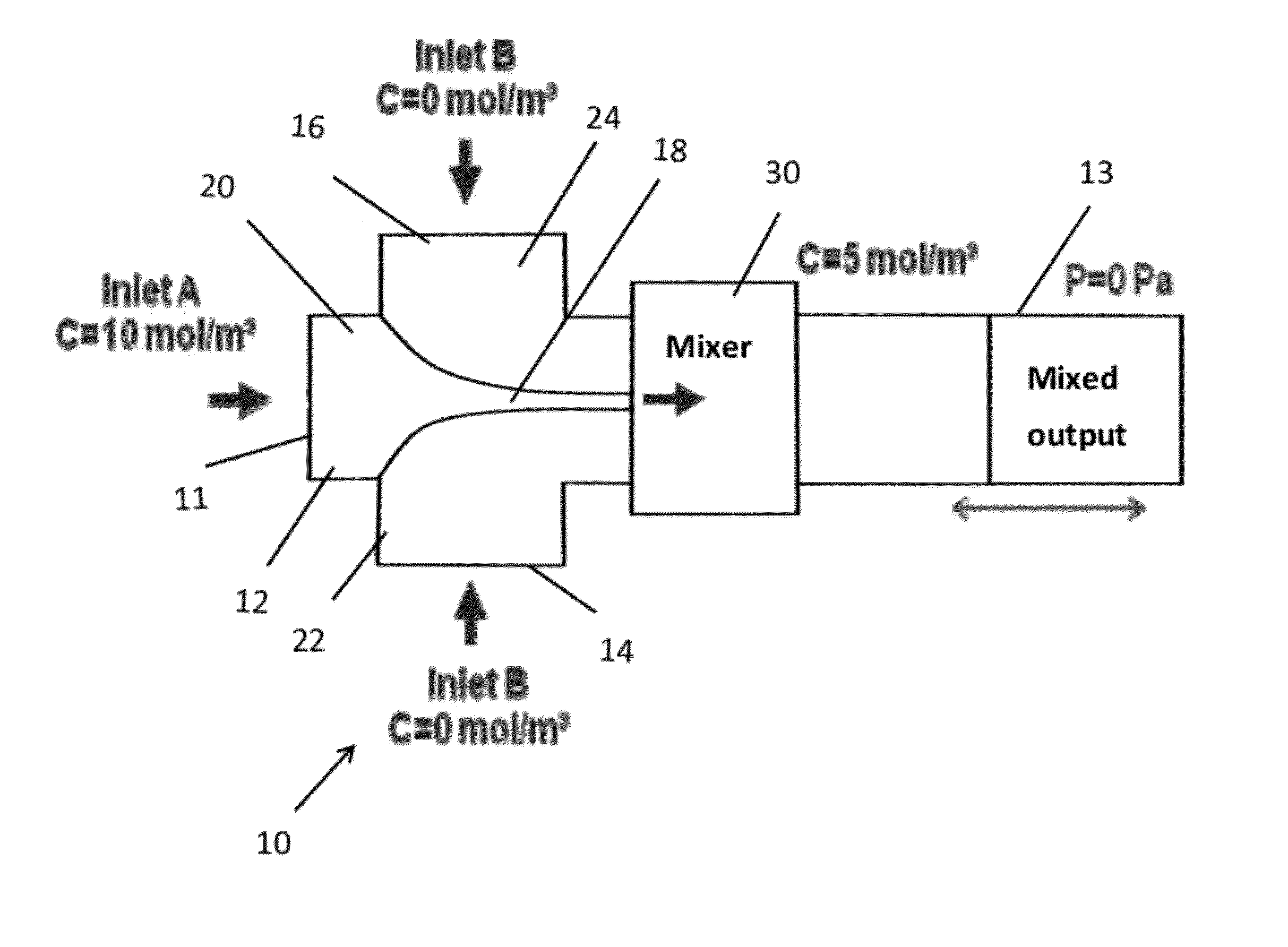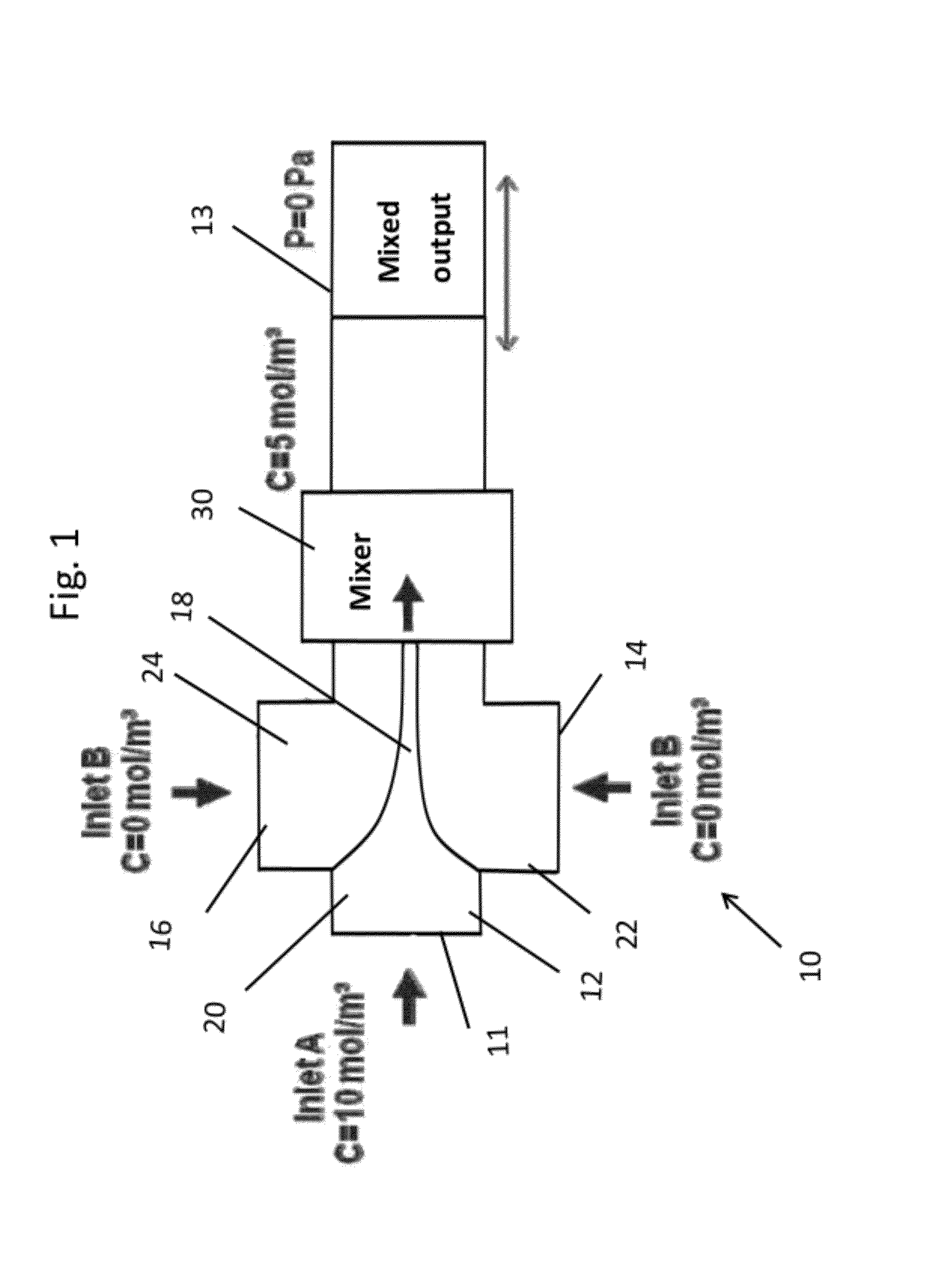Microfluidic mixer, method for mixing fluids
- Summary
- Abstract
- Description
- Claims
- Application Information
AI Technical Summary
Benefits of technology
Problems solved by technology
Method used
Image
Examples
example 1
[0043]Simulations were run in Comsol Multiphysics™ (Comsul, Inc., Burlington, Mass.) using the Microfluidic Incompressible Navier-Stokes and Convection Diffusion models. The geometries were drawn in Comsol to match the same depth and width parameters of the T-junction and mixer. Suitable parameters include a fluid of density of about 1000 kg / m3 (e.g. 998 kg / m3 was used in the modeling), viscosities of between about 5×10−4 Pa·s and 1 mPa·s (e.g. 8×10−4 Pa s and 1.002 Pa s) were used in the modeling) and an isotropic diffusivity coefficient of about 10−10 m2 / s. Suitable inlet boundary conditions are about 1 mm / s and 5 mm / s (e.g. 1.1 mm / s was used for the modeling) with a concentration of about 10 mol / m3 for the center flow; about 1 mm / s with a concentration of about 0 mol / m3 for the sheath flows for component A.
[0044]In this embodiment, the fluid dynamics are periodic such that the pressure drops are substantially the same throughout the length of fluid travel through the device. FIG....
PUM
 Login to View More
Login to View More Abstract
Description
Claims
Application Information
 Login to View More
Login to View More - R&D
- Intellectual Property
- Life Sciences
- Materials
- Tech Scout
- Unparalleled Data Quality
- Higher Quality Content
- 60% Fewer Hallucinations
Browse by: Latest US Patents, China's latest patents, Technical Efficacy Thesaurus, Application Domain, Technology Topic, Popular Technical Reports.
© 2025 PatSnap. All rights reserved.Legal|Privacy policy|Modern Slavery Act Transparency Statement|Sitemap|About US| Contact US: help@patsnap.com



